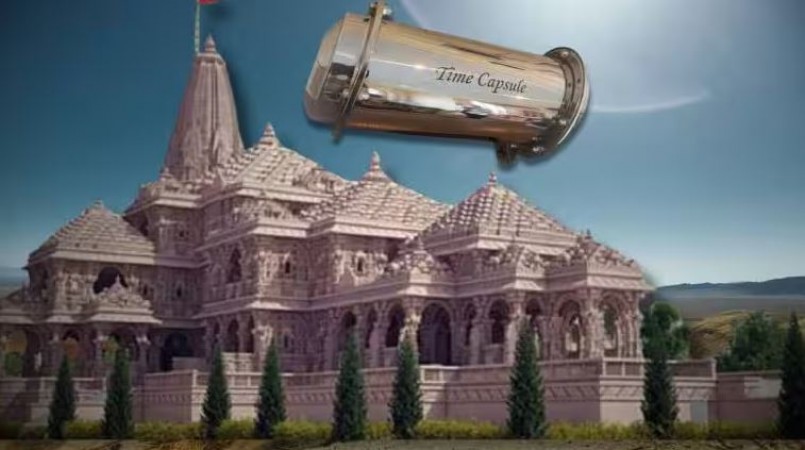
The new Ram Mandir in Ayodhya is unique in various aspects, one of which is the placement of a time capsule 2000 feet below the temple. This time capsule will contain historical information related to the Ram Mandir and the birthplace of Lord Rama.
According to members of the Shri Ram Janmabhoomi Teerth Kshetra Trust, the time capsule is strategically placed beneath the temple to safeguard against potential disputes in the future. It is intended to serve as a source of information in case anyone needs to access details related to the history of the Ram Mandir or Ayodhya. The capsule is expected to house documents that could provide insights into the temple's significance and its connection to Lord Rama's birthplace.
Now, let's delve into what a time capsule is. A time capsule is a metallic container of various shapes and sizes, typically made of materials such as aluminum, stainless steel, or brass. Due to concerns about corrosion, most capsules are made of brass. The documents inside the capsule are often submerged in a special acid to prevent deterioration over time.
Time capsules are used to preserve information about a specific place, object, or time period. The capsule contains documents, artworks, and information related to the subject, sealed within the container and buried in the ground. In the future, this capsule can be unearthed to retrieve comprehensive details about the associated object or location.
As for the duration and location of burial, time capsules are commonly placed within the foundations of buildings. They can be sealed for an indefinite period or for a specified time. For example, a time capsule buried in Georgia in 1940 was intended to be opened in the year 8113 if human civilization endured. Similarly, author Margaret Atwood has hidden several unpublished novels in a time capsule to be revealed in the year 2114.
Regarding the specific contents of the Ram Mandir's time capsule, it includes a detailed description in Sanskrit of Ayodhya, the Ram Janmabhoomi, Lord Rama, and related historical information. The trust opted for Sanskrit due to its conciseness and ability to convey extensive information with fewer words. The time capsule beneath the Ram Mandir is made of brass, providing durability. In case of any catastrophe on Earth, or even centuries later, this capsule is expected to provide valuable information about Ayodhya and the Ram Mandir.
In India, time capsules are not unique to Ayodhya. Several significant locations, including the Red Fort, IIT Kanpur, Mahatma Mandir in Gandhinagar, and Lovely Professional University in Jalandhar, have their own time capsules.
Speaking of controversies, the Red Fort's time capsule, placed by Prime Minister Indira Gandhi in 1972, sparked debate when it was removed shortly after her departure from office. Critics argued that the capsule primarily contained glorification of the Gandhi family and related documents, rather than contributing to India's cultural or historical heritage.
Time capsules are not limited to India; they are found globally, sometimes leading to disputes. In 2017, a 400-year-old time capsule was discovered in Bagerhat, Spain, inside a statue of Jesus Christ. It contained economic, political, and cultural information from the year 1777, making it the oldest known time capsule.
Despite their significance, time capsules are not without controversy. Experts suggest that sometimes irrelevant information is included, serving more as a means of glorification rather than providing valuable historical insights.
In conclusion, the placement of a time capsule beneath the Ram Mandir in Ayodhya is a unique initiative to preserve and share historical information. As the consecration ceremony approaches, the time capsule symbolizes an attempt to bridge the past and the future, ensuring that the legacy of the Ram Mandir endures for generations to come.
Ayodhya's Joyful Occasion: PM Modi Breaks Fast After Pran Pratishtha
Historic Consecration: Lord Rama Enthroned in Ayodhya's Grand Temple
How Ayodhya's Ram Mandir Inauguration Paves Way for Economic Boom, Tourism Surge